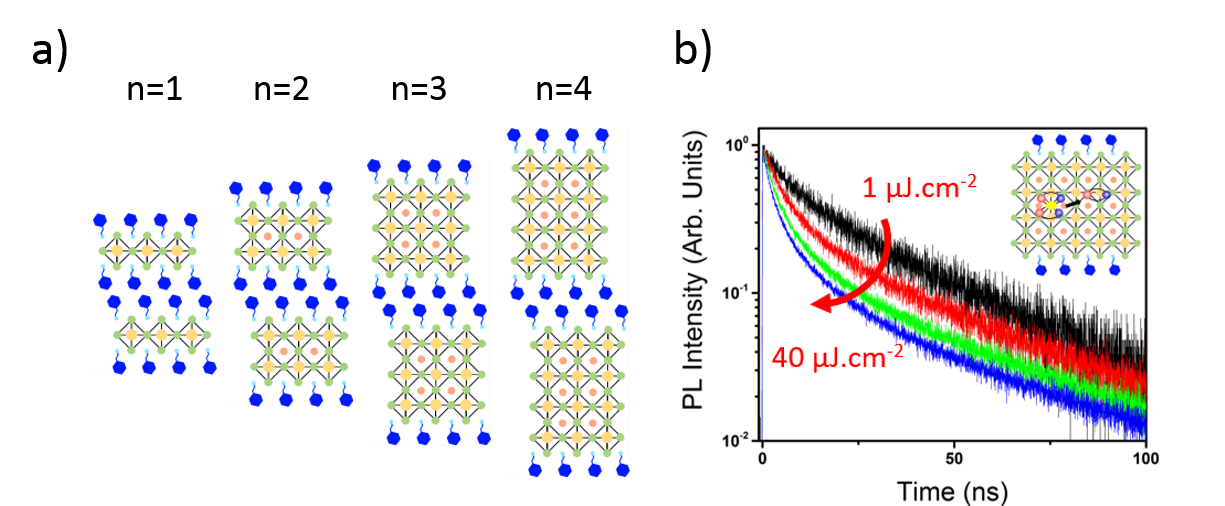You are here : GEMACENHighlights
- Partager cette page :
- PDF version
A better understanding of optical properties of hybrid perovskites for photovoltaics and light emission
Researchers from GEMaC and LuMIn labs unveil charge recombination dynamics in 2D hybrid perovskites, a promising new class of semiconductor materials.
Bidimensional (2D) hybrid perovskites constitute a new family of direct gap semiconductors, promising for applications in optoelectronics and photovoltaics. They are composed of an alternance of organic and inorganic layers (figure 1a). Their electronic structure is comparable to multi-quantum wells. Charges are confined in the inorganic part, which is composed of PbI6 octahedra and form strongly bound excitons. By controlling the thickness of the inorganic part, it is possible to modulate the confinment and the excitonic properties.
Researchers from GEMaC and LuMIn labs have studied the exciton recombination processes in 2D hybrid perovskites. Crystals with increasing inorganic layers (from 1 to 4, see figure 1a) have been synthetized and studied using time-resolved photoluminescence (PL) on a wide range of power density. When the thickness of the inorganic part (the width of the well) is increased, an increasing fraction of free electron-hole pairs can be observed in a transient regime, a few picoseconds after photoexcitation. The dynamics is then dominated by exciton recombination. At low excitation, the presence of defects induces non-exponential decays. At high injection, the defects are saturated and the many-body effects become predominant. The recombination mechanism is then exciton-exciton annihilation (figure 1b). This work yields a better understanding of fundamental properties of 2D hybrid perovskites and could help optimizing optoelectronic devices.

Figure 1 : a) Schematic representation of 2D hybrid perovskites with an increasing number of inorganic layers between organic layers (blue). b) Time-resolved PL as a function of power for n = 4 structure and illustration of exciton-exciton recombination phenomenon.
Related publication:
G. Delport, G. Chehade, F. Lédée, H. Diab, C. Milesi-Brault, G. Trippé-Allard, J. Even, J.-S. Lauret, E. Deleporte, D. Garrot,
"Exciton-exciton annihilation in two-dimensional halide perovskites at room temperature"
J. Phys. Chem. Lett. 10(17), 5153–5159 (2019)





